Extermination of rodents - mice - rats
Mouse or rat problem? Call us!
(514) 600-3691
- Contact us for an inspection!
- No danger to your health and pets
- More than 25 years of experience in the field
- 100% effective, fast removal
- Fast, discreet and professional service

Free Immediate Quote
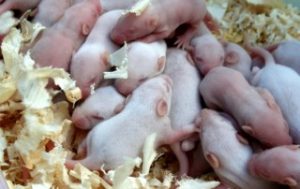
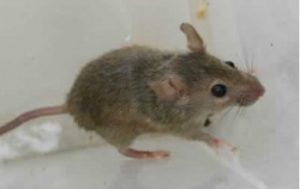
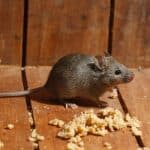
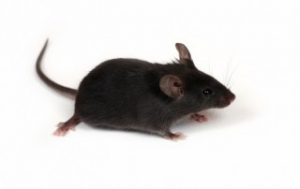
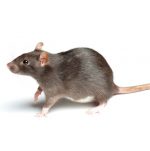
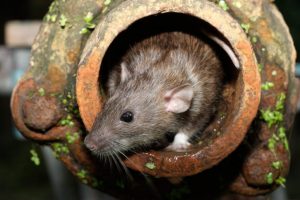
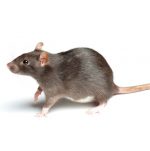
Our company is specialized in the elimination of pests that live in the structure of buildings such as mice and rats. We have an RBQ general contractor's license attesting to our extensive knowledge of building structures and their components.
We offer a personalized service focused on the complete elimination of the identified problem and the prevention of any reinfestation. We are extremely efficient.
We follow the recommendations of Health Canada and the Quebec Ministry of the Environment to the letter to ensure the safest application of rodenticides possible.
RATS
The clues to their presence are droppings 10 to 20 mm long scattered along their path ( they produce 20 – 50 per day), moved objects ( they are much stronger than mice), gnawed objects, holes in walls ( gypsum doesn’t hold up to them for long), and often noise in the walls in the evening when they are active. Rats can get through a hole the size of a quarter and the entrances to the building must be plugged tightly. Simply plugging the holes with urethane foam or silicone is not enough, the rats will make one bite and an hour later they will be back through the same holes. Call in the experts to prevent infestations.
Rats carry mites, fleas, lice and especially diseases or bacteria such as salmonella, yellow fever, rabies and dycentery. They transmit these diseases to humans through their urine and contact with food.
They have between 3 and 12 litters of 7 or 8 young per year, making them one of the most prolific animals on the planet. In ideal conditions, two rats could produce nearly a million individuals in 18 months.
In houses they will seek the points of access to water: plumbing leaks, condensation (they must drink at least every 24H) and they will accumulate materials to build a nest in a warm and insulated place. (insulating wool, clothes etc.) They will also start looking for food and they are not difficult. Anything that is edible will suffice for them.
To get their food and water, they will create passages and gnaw through any obstacles that come between them and their goal.
By gnawing into the structure, they do a lot of damage and they have a bad habit of gnawing on electrical wires which can cause short circuits and fires.
As they are very fearful, it can take longer to remove them. You need to start treatment as soon as you realize they are present.
Beware of homemade traps and sticky traps, a bite from an injured or trapped rat can seriously injure you.
Also be careful not to buy the rodenticides that are available on the market in big box stores, these poisons are now almost all without effect on rodents and instead of eliminating them , you will fatten them up.
We can do drain inspections with cameras and smoke tests to find broken drain pipes that can let rats into buildings.
To learn more about this animal check out our pest encyclopedia.
To get rid of rats, deal with specialists.
CONTACT US! : (514) 600-3691 / info@extermination911.com
RATS
The clues to their presence are very small droppings as big as grains of rice with one or both pointed ends 6 mm long or less that they produce at a rate of 40-100 per day.
You can also see the trail left in its urine by its paws or tail, nibbled objects or the characteristic smell of its urine that it leaves in hundreds of droplets along its path.
Because they are a vector for the spread of diseases such as meningitis (70% of them are said to be infected with it) and other parasites such as mites, flea and tapeworm,
you should not tolerate the presence of these rodents in your walls.
The mouse lives in the structures of buildings inhabited by humans and should not be confused with the field mouse ( vole ) which prefers to live outside and enters the houses especially in the fall.
A mouse can have 5 to 10 litters per year of 6 young at a time on average, so if you do the counting, the mouse population increases very quickly in a house where they find shelter food and water. The mouse is curious unlike the rat and she will explore a little bit everywhere until she finds what she wants. It will taste any food it thinks is edible and it is often this,
along with its droppings and urine that causes contamination.
A mouse can fit through a hole the size of a dime so possible entrances into the building must be plugged very tightly. Furthermore, it is not enough to plug the holes with urethane foam or silicone, the mice will only get in and out of the same places. The solution to get rid of them is to use poisoned baits.
Be very careful not to buy the products that are available on the market in the big stores, these poisons are now almost all without effect on mice and instead of eliminating them , you will fatten them.
To learn more about this animal, consult our encyclopedia of pests.
To get rid of mice, deal with specialists.
CONTACT US! : (514) 600-3691 / info@extermination911.com
MILES
These rodents often live near humans, and it is illegal to eliminate them with poison. We must relocate them.
Be careful, these cute little animals can chew through plastic or wood to get into your homes , they wreak havoc on insulation wool to make their nests, they can damage your vehicles and can seriously injure you when cornered.
Call us, we will set up cages and relocate these little intruders.
Learn more about these rodents by visiting our encyclopedia of parasites.
We work for you, and your health is important to us.
We serve the greater Montreal area, Longueuil, Laval, the North Shore and the South Shore.
We also treat all other pest problems ( bed bugs, cockroaches, carpenter ants, white worms, wasps, spiders etc)
To learn more about these pests, visit our encyclopedia of parasites.
Free phone quote

We have a local team for all the following regions
Île de Montréal : Baie-D’Urfé – Beaconsfield – Côte-Saint-Luc – Dollard-Des Ormeaux – Dorval – Hampstead – Kirkland – L’Île-Dorval -Île des Soeurs – Mont-Royal – Montréal – Montréal-Est – Montréal-Ouest – Pointe-Claire – Sainte-Anne-de-Bellevue – Senneville – Westmount – Ahuntsic-Cartierville – Anjou – Côte-des-Neiges–Notre-Dame-de-Grâce – Lachine – LaSalle – Le Plateau-Mont-Royal – Le Sud-Ouest – L’Île-Bizard–Sainte-Geneviève – Mercier–Hochelaga-Maisonneuve – Montréal – Montréal-Nord – Outremont – Pierrefonds-Roxboro – Rivière-des-Prairies – Pointe-aux-Trembles – Rosemont – La Petite-Patrie – Saint-Laurent – Saint-Léonard – Verdun – Ville-Marie – Villeray–Saint-Michel – Parc-Extension
Rive-Sud de Montréal : Longueuil – Belœil – Boucherville – Brossard – Candiac – Carignan – Chambly – Châteauguay – Contrecœur – Delson – La Prairie – Longueuil – McMasterville – Mont-Saint-Hilaire – Otterburn Park – Saint-Amable – Saint-Antoine-sur-Richelieu – Saint-Basile-le-Grand – Saint-Bruno-de-Montarville – Sainte-Catherine – Saint-Constant – Saint-Jean-sur-Richelieu – Saint-Isidore – Sainte-Julie – Saint-Lambert – Saint-Marc-sur-Richelieu – Saint-Mathias-sur-Richelieu – Saint-Philippe – Varennes
Rive-Nord de Montréal : Mirabel – Deux-Montagnes – Oka – Saint-Eustache – Pointe-Calumet – Saint-Joseph-du-Lac – Sainte-Marthe-sur-le-Lac – Blainville – Boisbriand – Bois-des-Filion – Lorraine – Rosemère – Sainte-Anne-des-Plaines – Sainte-Thérèse – Mascouche – Terrebonne – Charlemagne – L’Assomption – Repentigny – Saint-Sulpice – L’Épiphanie

